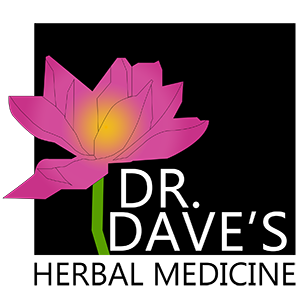



Throat Zap
Immediate relief from early stage cold/flu with sore throat or fever:
- use at onset or cold or flu with sore throat, fever or runny nose
- based on the famous Chinese medicine formula Yin Qiao
- liquid format allows herbs to be dropped directly into throat for instant relief
Description
Throat Zap is a natural remedy based on the famous Chinese herbal formula Yin Qiao. This formula was developed in 1798 for use during the early stages of a cold or flu with symptoms such as a sore throat and fever. It continues to be the standard to this day.
In Throat Zap, we augment the traditional formula by adding two potent anti-viral herbs, Isatis Root and Echinacea. Throat Zap is best used at the onset of symptoms. The most effective way to use Throat Zap is to drop the tincture into the back of the tongue and let it run down the throat. This way, the herbs, along with the alcohol they are tinctured in, will work exactly where they are needed to maximize its effect. It can be used frequently, even every hour or two, at the onset of symptoms.
Throat Zap augments the traditional formula by adding two potent anti-viral herbs, Isatis Root and Echinacea. I believe the best way to knock out a cold is to hit it hard, hit it early and hit it often. I recommend a dose of Throat Zap every hour or two at the onset of a cold or sore throat.
Ingredients
-
Lonicera (Jin Yin Hua)
Also known as honeysuckle, its flower buds are gathered in the beginning of summer, then dried in the shade before being used in herbal remedies. It is used to clear heat and remove toxins and disperse external Wind Heat.
-
Forsythia (Lian Qiao)
Forsythia is a hardy tree and the fruit of the forsythia is used medicinally. The fruit is steamed, dried in the sun, and the seeds removed from the fruit before used in herbal remedies. It clears heat.
-
Platycodon (Jie Geng)
Platycodon is a perennial plant that grows to a height of about three feet. The plant is characterized by its flower buds which, when unopened, resemble small, inflated balloons. The main and secondary roots are used medicinally. It opens lungs and expels phlegm.
-
Niu Bang Zi
It is a short, green plant that grows in well-drained soil, with wavy, heart-shaped leaves. Both the root and leaves are used in herbal remedies; however, the roots contain the most benefit. In traditional Chinese medicine, burdock root is often used in combination with other herbs to treat sore throats, tonsillitis, colds, and even measles by dispersing Wind Heat.
-
Mint (Bo He)
Mint oil contains dozens of chemicals, acids and compounds, including leucine, menthol and aspartic acid. Together, these substances are responsible for many of mint’s healing properties. Studies have shown that mint can inhibit bacteria such as staphylococcus aureus, staphylococcus albus and streptococcus, and viruses such as herpes simplex and vaccinia. Other research shows that it facilitates the flow of mucus in the trachea, and can improve the absorption rates of salicylic acid (the main ingredient in aspirin).
-
Schizonepeta (Jing Jie)
Schizonepeta is a flowering plant that resembles a thistle in appearance. The leaves, stems and flowers are gathered in autumn and winter, dried in the shade and cut into pieces. Schizonepeta contains several chemical compounds, including menthol, menthone, cineole, hesperidin, caffeic acid and schizonodiol. It is associated with the Lung and Liver and expels wind.
-
Bamboo Leaf (Dan Zhu ye)
Instead of having a rigid, cane-like stem like most bamboos, lophatherum grows as a type of long-leaf grass. The leaves are used in herbal formulas. It helps to clear damp heat in the stomach or heart (manifested as irritability, canker sores and swollen gums).
-
Phragmites (Lu Gen)
Phragmites is the name given to species of aquatic grasses. The grasses can reach a height of 5 and 15 feet, with feather-like flowers and thin, stiff, hollow stems. The rhizomes are used in herbal preparations, which are dug up at the end of spring or in the fall and removed of fibrous material. It clears heat from the lungs.
-
Licorice (Gan Cao)
Licorice has been used to flavor foods for centuries. Licorice root is used medicinally. The two most important components of licorice are glycyrrhizin and flavonoids. Glycyrrhizin works as an anti-inflammatory and antiviral and inhibits the breakdown of cortisol. It also augments Qi, moistens lungs, resolves phlegm and stops coughing.
-
Ginseng (Ren Shen)
Ginseng is the root of a plant that helps with Lung Qi Deficiency with symptoms such as asthma, wheezing, dyspnea, shortness of breath, and weak and labored breathing.
-
Isatis Root (Ban Lan Gen)
Isatis root comes from the isatis plant. It is harvested in the autumn, removed from the soil and allowed to dry naturally in the sun. Isatis root is considered a "cooling" herb and drains heat: it cools the blood and treats damp-heat conditions such as jaundice. Isatis root is a renowned antiviral and antibacterial, which helps colds, influenza and sore throats.
-
Bupleurum (Chai Hu)
Bupleurum is an upright-growing plant. The root is used medicinally. The active ingredients in bupleurum root include saponins and plant sterols, which have been shown to lower fevers and reduce inflammation in animal studies. It relieves stagnation, disperses Wind-Heat, resolves phlegm and congestion.



